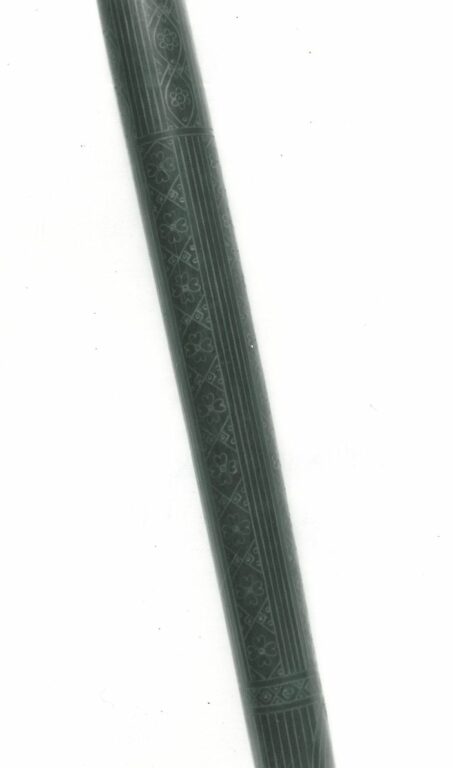He was born in 1902 in Veľká Lúka, where he lived his whole life. For many years, he worked as a laborer on the railway and also farmed. He actively started producing in 1919. He began making axes for ÚĽUV in 1955 in collaboration with Peter Krnáč, who crafted the metal axe heads for him. Later, he added shepherds' flutes,...
He was born in 1902 in Veľká Lúka, where he lived his whole life. For many years, he worked as a laborer on the railway and also farmed. He actively started producing in 1919. He began making axes for ÚĽUV in 1955 in collaboration with Peter Krnáč, who crafted the metal axe heads for him. Later, he added shepherds’ flutes, fujaras, and whistles, which were considered some of the best in Slovakia musically at the time. Even more highly regarded were the decorative elements of his work, achieved through the art of metal stamping on wood. Initially, this technique was used to strengthen the material and prevent wood from splitting, but over time it also gained an aesthetic character.
He used maple, ash, and beech wood for making musical instruments, and plum wood for axes and shepherds’ flutes. The final products had a characteristic dark brown to black color, with brass or alpaca ornaments standing out beautifully on their surface. The color of the wood was achieved through multiple applications of staining and sun exposure. He used concentrated hydrochloric acid and any type of oil for staining the wood, then exposed it to sunlight over a large fire. Care had to be taken during this process to prevent the flames from burning the product’s walls. An exception was plum wood, which attained a dark color after being soaked in unslaked lime.
His work was distinguished by quality and precision. He used 0.2 mm thick brass and alpaca sheet metal for making decorations. He softened the metal by heating it on a red-hot stove and then cut it into strips 1-1.5 mm thick with sharp scissors. Before further cutting, he would sharpen the outer edge of the metal with a fine file to make it sharper for the design to penetrate the wood more easily. He either created decorations from straight strips, bending them into various shapes like circles, hearts, semicircles, crescents, or scales, or used wavy sheet metal. By feeding a strip of metal between two toothed wheels of a homemade device, he formed decorations in the shape of towers, triangles, arches with the help of fine pliers. He hammered the decorations into the wood, and the quality of his work depended on the evenness of the strikes and the angle of the hammer’s impact. After finishing the product, he sanded it smooth and applied a transparent varnish.
His source of inspiration for the ornaments was an ancient shepherd’s axe made by an unknown master – he observed the ornament’s character and partly the production technology. He refined his skills through constant practice, not only technically but also in applying ornaments. He did not sketch the ornaments in advance, but inserted the prepared decorative elements directly into the wood, combining them in various variations. The ornaments he used were typically geometric and alternated with floral motifs. The effect was enhanced by the color combination of yellow brass and white alpaca sheet metal, which stood out beautifully against the dark wood. In the technique he used, he was the sole producer at the time. However, another Veľká Lúka resident, Ondrej Kišík, learned this technique while assisting him in his workshop and began producing his range for ÚĽUV after his death.
In 1960, Juraj Benedik’s mastery was recognized with the title of Master of Folk Art Production in the field of wood embossing with metal.







